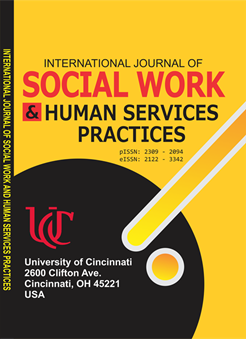INTERNATIONAL JOURNAL OF SOCIAL WORK AND HUMAN SERVICES PRACTICES (IJSWHSP)
MONETARY POLICY MEASURES AND UNEMPLOYMENT IN NIGERIA
E-ISSN: 2122-3342
P-ISSN: 2309-2094
DOI: https://iigdpublishers.com/article/344
This study determines the effect of monetary policy on unemployment in Nigeria from 1985 to 2022. The study was directed by four distinct objectives, four research questions, and four hypotheses. The lending rate, money supply, liquidity ratio, and exchange rate served as proxies for monetary policy (independent variable), while the unemployment rate was used as the indicator of unemployment (dependent variable). The research employed yearly temporal data obtained from the Central Bank of Nigeria Statistical Bulletin and the publications of the National Bureau of Statistics (NBS). The data analysis methods employed are the Augmented Dickey-Fuller (ADF) test, the limits Co-integration test, and the Autoregressive Distributed Lag (ARDL) methodology. The results indicated that the
lending rate and exchange rate exert a favourable and substantial sway on the unemployment rate in Nigeria, whereas the money supply has an unfavourable and non-substantial impact, and the liquidity ratio demonstrates an unfavourable and substantial outcome on the unemployment rate in Nigeria. The study revealed that monetary policy has considerable effect on unemployment in Nigeria. It was suggested, among others, that the Central Bank of Nigeria (CBN) should contemplate enacting measures to lower lending rates, so making credit more accessible for enterprises. Reduced rate of interest may enable small and medium-sized firms (SMEs) to get loans for growth, resulting in heightened output, which might subsequently provide more employment possibilities and diminish unemployment rates.
Nwikina Christian Gbarawae PhD, Nyeche Ezebunwo, Amadi Chukuemeka Roberts & Ugwuegbu Francisca Chibugo
